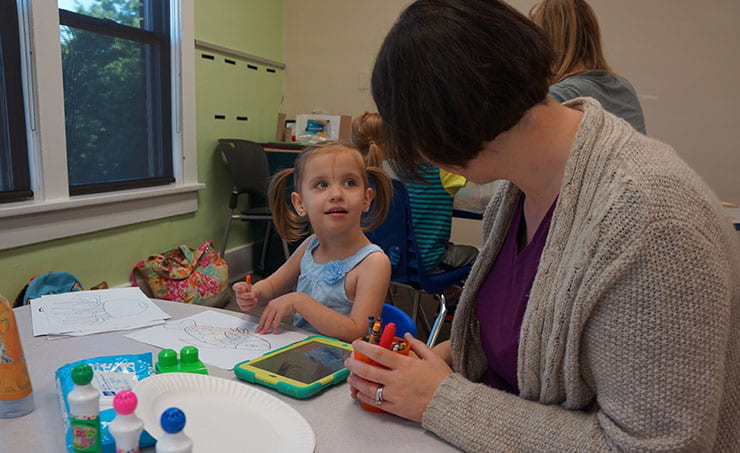
Typical Preschoolers’ Perceptions of Communication from a Preschooler with Autism Spectrum Disorder across Modalities
PIs: Dr. Lorah and Dr. Holyfield
Understanding typical preschoolers’ perceptions of communication modalities could help guide AAC intervention for preschoolers with autism spectrum disorder (ASD). This study explored the perceptions of 16 typically developing preschoolers toward a communication app on mobile technology, a communication binder with printed picture symbols, and prelinguistic communication used by a preschooler with ASD in a series of videos the preschoolers watched. Using a multi-method design, the study implemented both quantitative (rank ordering and preference selection) and qualitative (interview) methodologies. Quantitative results revealed the typical preschoolers had a clear overall preference for the mobile technology, but variation in preference existed when selecting a communication modality to use in specific social scenarios. Qualitative data show the children more easily understood the child with ASD when he used mobile technology, which may have accounted for some preference toward the modality. The study is exploratory in nature and limited by its size and scope. However, it provides insights useful for clinicians’ understanding not just how typical preschoolers perceive various communication modalities, but also why they may perceive some modalities more favorably than others, in order to tailor intervention accordingly.
*This project was funded by the CIED Research Incentive Grant
Enrollment in this project is no longer open.
Evaluating a Protocol to Teach Communication with a Speech Generating Device
PIs: Dr. Lorah and Dr. Holyfield
This study will assess the effectiveness of a speech-generating device training protocol implemented in the classroom and by classroom personnel. Using a six-phased training sequence teachers and paraprofessionals will teach school aged children with communication needs to communicate using a tablet-based speech-generating device. Data will be collected on both student progress within the six-phased sequence and teacher/paraprofessional fidelity of implementation. This study will evaluate both the effectiveness of the six-phased teaching sequence, when implemented within the natural environment, as well as, effective coaching and training procedures for teaching teachers to use such technologies.
*This project is funded by the COEHP Dean’s Research Fund
Enrollment in this project is no longer open.
Understanding Augmentative and Alternative Communication for Individuals with Intellectual and Developmental Disabilities and Their Communication Partners
PIs: Dr. Lorah and Dr. Holyfield
Despite the overall efficacy of augmentative and alternative communication (AAC) in promoting communication, language, and social development for individuals with intellectual and developmental disabilities (IDD), outcomes can be limited by a lack of fit between an individual and the AAC technology provided as well as a lack of understanding about best practices from communication partners. Therefore, this study will take a descriptive approach in understanding current practices, attitudes, successes and barriers surrounding effective AAC technology and instruction for individuals with IDD as provided by their communication partners.
Enrollment in this project is currently open. If you are interested in learning more about potential participation in this project, email Dr. Lorah at: lorah@uark.edu